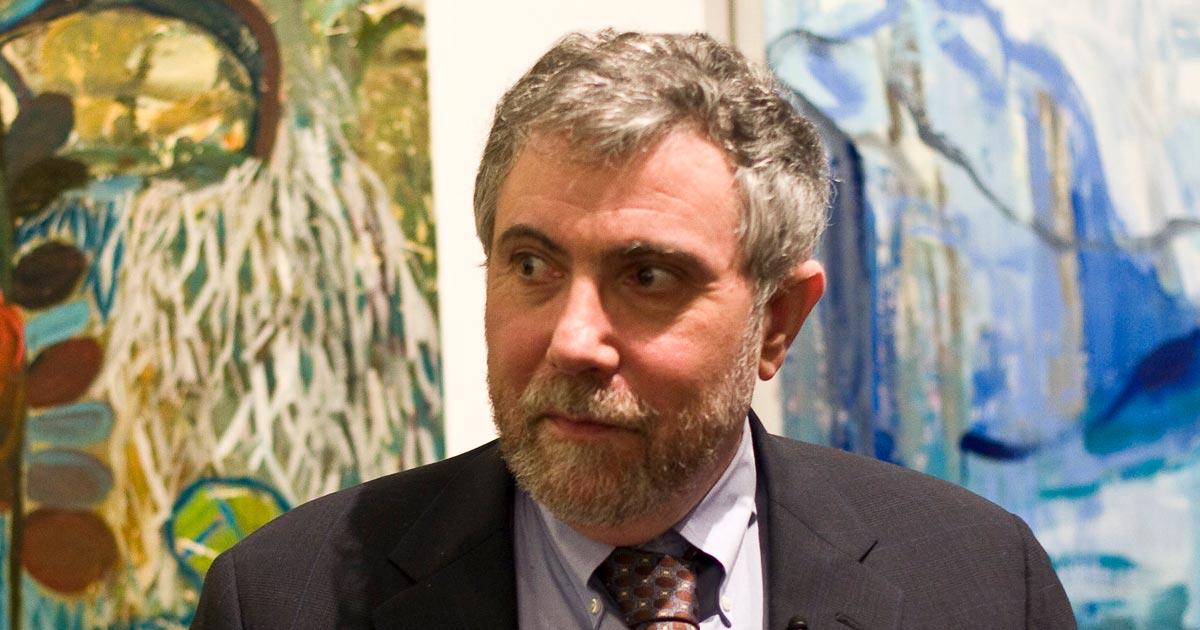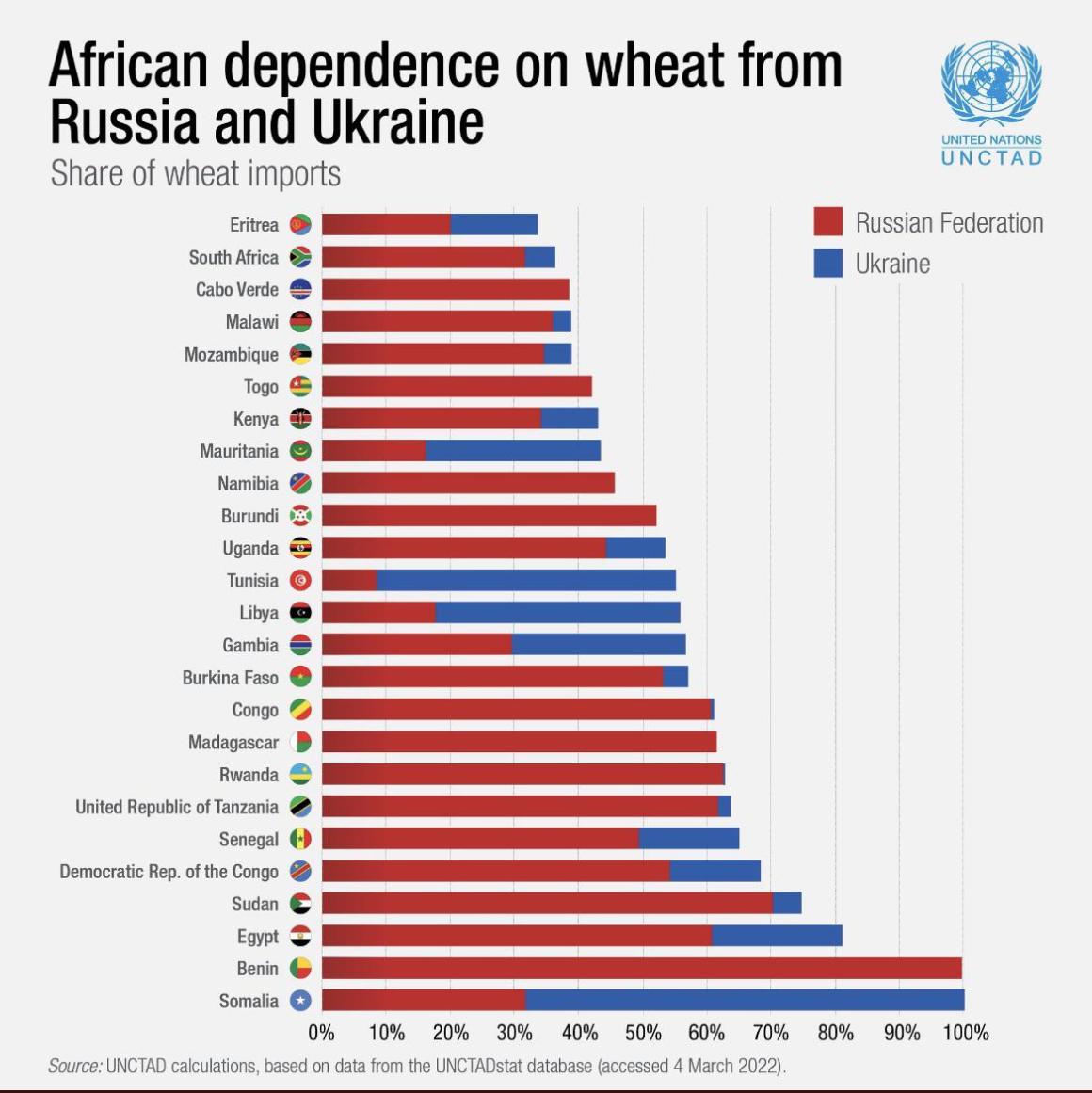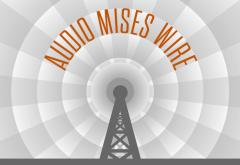In the New York Times article “How High Inflation Will Come Down,” Paul Krugman suggests that the key for future inflation is inflation expectations. Krugman does not think that currently inflation expectations are comparable to the 1980s. According to him: Forty years ago, as many economists will tell you, inflation was “entrenched” in the economy. That is, businesses, workers and consumers were making decisions based on the belief that high inflation would continue for many years to come. One way to see this entrenchment is to look at the wage contracts—typically for three years—that unions were negotiating with employers. Even then, most workers weren’t unionized, but these deals are a useful indicator of what was probably happening to wage- and price-setting
Topics:
Frank Shostak considers the following as important: 6b) Mises.org, Featured, newsletter
This could be interesting, too:
Eamonn Sheridan writes CHF traders note – Two Swiss National Bank speakers due Thursday, November 21
Charles Hugh Smith writes How Do We Fix the Collapse of Quality?
Marc Chandler writes Sterling and Gilts Pressed Lower by Firmer CPI
Michael Lebowitz writes Trump Tariffs Are Inflationary Claim The Experts
 In the New York Times article “How High Inflation Will Come Down,” Paul Krugman suggests that the key for future inflation is inflation expectations. Krugman does not think that currently inflation expectations are comparable to the 1980s. According to him:
In the New York Times article “How High Inflation Will Come Down,” Paul Krugman suggests that the key for future inflation is inflation expectations. Krugman does not think that currently inflation expectations are comparable to the 1980s. According to him:
Forty years ago, as many economists will tell you, inflation was “entrenched” in the economy. That is, businesses, workers and consumers were making decisions based on the belief that high inflation would continue for many years to come. One way to see this entrenchment is to look at the wage contracts—typically for three years—that unions were negotiating with employers. Even then, most workers weren’t unionized, but these deals are a useful indicator of what was probably happening to wage- and price-setting more generally.
Furthermore:
So, what did those wage deals look like? In 1979, union settlements with large companies that didn’t include a cost-of-living adjustment specified an average wage increase of 10.2 percent in the first year and an annual average of 8.2 percent over the life of the contract. As late as 1981, the United Mine Workers negotiated a contract that would raise wages 11 percent annually over the next several years…. Why were workers demanding, and employers willing to grant, such big pay hikes? Because everyone expected high inflation to persist for a long time. In 1980 the Blue Chip Survey of professional forecasters predicted 8 percent annual inflation over the next decade. Consumers surveyed by the University of Michigan expected prices to rise by about 9 percent annually over the next five to 10 years. With everyone expecting inflation to continue, workers wanted raises that would keep up with rising prices, and employers were willing to grant those raises because they expected their competitors’ costs to be rising as fast as their own. What this did, in turn, was make inflation self-perpetuating: Everyone was raising prices in anticipation of everyone else raising prices. Ending this cycle required a huge shock—an economy so depressed both that inflation fell and that workers were compelled to accept major concessions.
This time around, Krugman holds, things are different:
Back then almost everyone expected persistent high inflation; now few people do.Bond markets expect inflation eventually to return to pre-pandemic levels. While consumers expect high inflation over the next year, their longer-term expectations remain “anchored” at fairly moderate levels. Professional forecasters expect inflation to moderate next year. This means that we almost surely aren’t experiencing the kind of self-perpetuating inflation that was so hard to end in the 1980s. A lot of recent inflation will subside when oil and food prices stop rising, when the prices of used cars, which rose 41 percent (!) over the past year during the shortage of new cars, come down, and so on. The big surge in rents also appears to be largely behind us, although the slowdown won’t show up in official numbers for a while. So it probably won ‘t be necessary to put the economy through an ’80s-style wringer to get inflation down.
Given all this, Krugman holds, history tells us that we are not moving to rampant inflation as we did in the 1970s:
So, my message for those intoning dire warnings about the return of ’70s-type stagflation—which some of them have been itching to do for years—is that they should look at their history more carefully. The inflation of 2021–22 looks very different, and much easier to solve, from the inflation of 1979–80.
Inflation Expectations and General Price Increases
For most economic commentators the underlying driving force of general price increases, which they label as inflation, is inflationary expectations.1 For instance, if there is a sharp increase in the price of oil, individuals may form higher inflationary expectations that could set in motion increases in the prices of goods and services, or so it is held.
These same commentators believe that if expectations can be made less responsive to various price shocks, then over time this would mitigate the effect of price shocks on the momentum of prices of goods and services. That also believe that suitable central bank policies can bring individuals inflationary expectations to a state of equilibrium in which expectations are perfectly anchored or not sensitive to changes in various economic data.
Once inflationary expectations are anchored, they believe, various price shocks such as sharp increases in oil or food prices are likely to have a short-lived effect on general increases in prices. This means that over time sudden large price increases are unlikely to have much effect on the rate of inflation. Note that what matters in this way of thinking is the underlying inflation.
Federal Reserve policy makers and many economists believe that in order to track underlying inflation one must pay attention to core inflation—percentage changes in the consumer price index minus food and energy. To make inflation expectations well-anchored, individuals must be clear about the monetary policy of central bank policy makers, and as long as individuals are unclear about the rate of inflation that policy makers want to target, it is going to be difficult to bring inflationary expectations to a state of equilibrium.
Can General Increases in Prices Be Induced without Increasing Money Supply?
Without a preceding increase in money supply, there cannot be general increase in prices, a price of a good being amount of dollars paid per unit of a good. All other things being equal, if prior to the increase in money supply, the price of a loaf of bread that formerly stood at $1 now is $2 after an increase in the supply of dollars. For a given amount of goods, if the stock of money remains unchanged the amount of dollars spent per unit of a good will stay unchanged, as long as nothing else has occurred.
However, suppose that a sudden increase in the price of oil leads people to form higher inflation expectations. If the money stock remains unchanged, then no general increase in the prices of goods and services is going to take place, all other things being equal. In this situation, the prices of oil and energy related goods will go up while the prices of other goods and services will go down. (If more money spent on oil and energy related products, obviously then less money will be left for other goods and services—note again a price is the amount of money per unit of a good).
We can conclude that changes in the money supply underpin the rises in prices, and not inflationary expectations. Without the support from money supply, all other things being equal, no general increase in prices can take place notwithstanding inflation expectations.
Instead of inflation being the increase in prices, we measure inflation by increases in money supply. Note that we do not say that inflation is caused by increases in money supply; instead, we hold that inflation is about increases in money supply.
According to Ludwig von Mises,
Inflation, as this term was always used everywhere and especially in this country, means increasing the quantity of money and bank notes in circulation and the quantity of bank deposits subject to check. But people today use the term ‘inflation’ to refer to the phenomenon that is an inevitable consequence of inflation, that is the tendency of all prices and wage rates to rise. The result of this deplorable confusion is that there is no term left to signify the cause of this rise in prices and wages. There is no longer any word available to signify the phenomenon that has been, up to now, called inflation.2
The larger problem with inflation is not so much how it causes price increases (although price increases do cause problems) but the damage it inflicts to the wealth generation process. This is because increases in money supply set in motion an exchange of nothing for something, which generates a similar outcome to what the counterfeit money does. It weakens wealth generators thereby weakening their ability to generate wealth and, in turn, undermines individuals’ living standards.
What Is the Present Status of Inflation?
So what is the present status of inflation? The official version is that the yearly growth rate of the US Consumer Price Index (CPI) stood at 7.9 percent in February against 7.5 percent in January and 1.7 percent in February 2021. However, in terms of money supply, inflation stood at 7.9 percent in February 2021 against 4 percent in January 2019. Given such massive increases in money supply and given the long time lags from changes in money and changes in prices one should not be surprised that the yearly growth rate of the CPI displays a visible increase.
Summary and Conclusion
We suggest that a decline in the yearly growth rate of the AMS from 79 percent in February 2021 to 8 percent by February this year has likely set in motion a possible decline in the momentum of the CPI towards year end or early next year.
Contrary to what Krugman claims, we hold that inflation is not about increases in consumer prices but about increases in money supply. Also contrary to various commentators, what Krugman describes as inflationary expectations in the absence of increases in money supply cannot cause general increase in the prices of goods and services.
- 1. Ben S. Bernanke, “Inflation Expectations and Inflation Forecasting” (speech given at the Monetary Economics Workshop of the National Bureau of Economic Research Summer Institute, Cambridge, Massachusetts, July 10, 2007).
- 2. Ludwig von Mises, Economic Freedom and Interventionism: An Anthology of Articles and Essays, ed. Bettina Bien Greaves (Indianapolis, Ind.: Liberty Fund, 1990), p. 115.
Tags: Featured,newsletter








